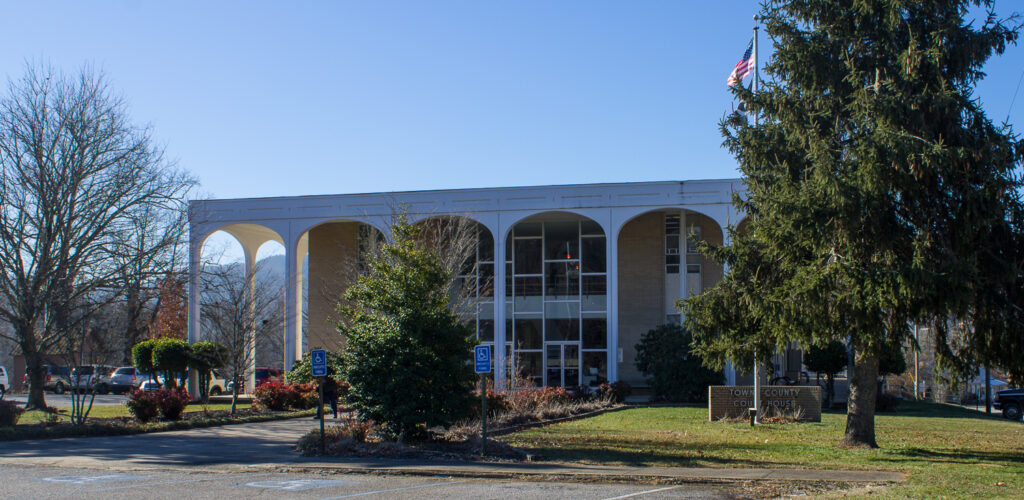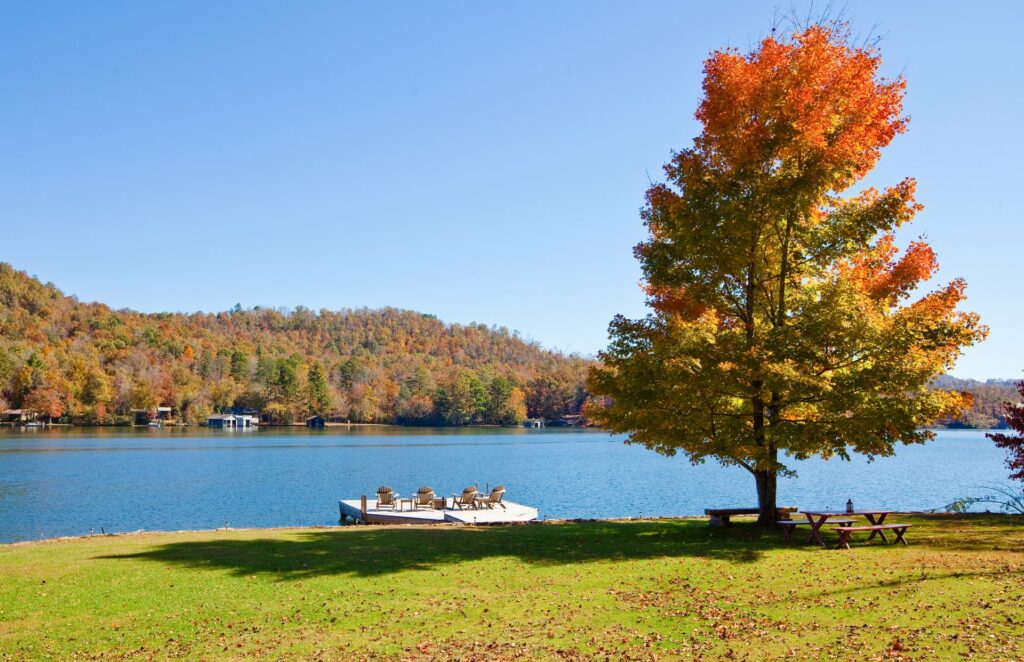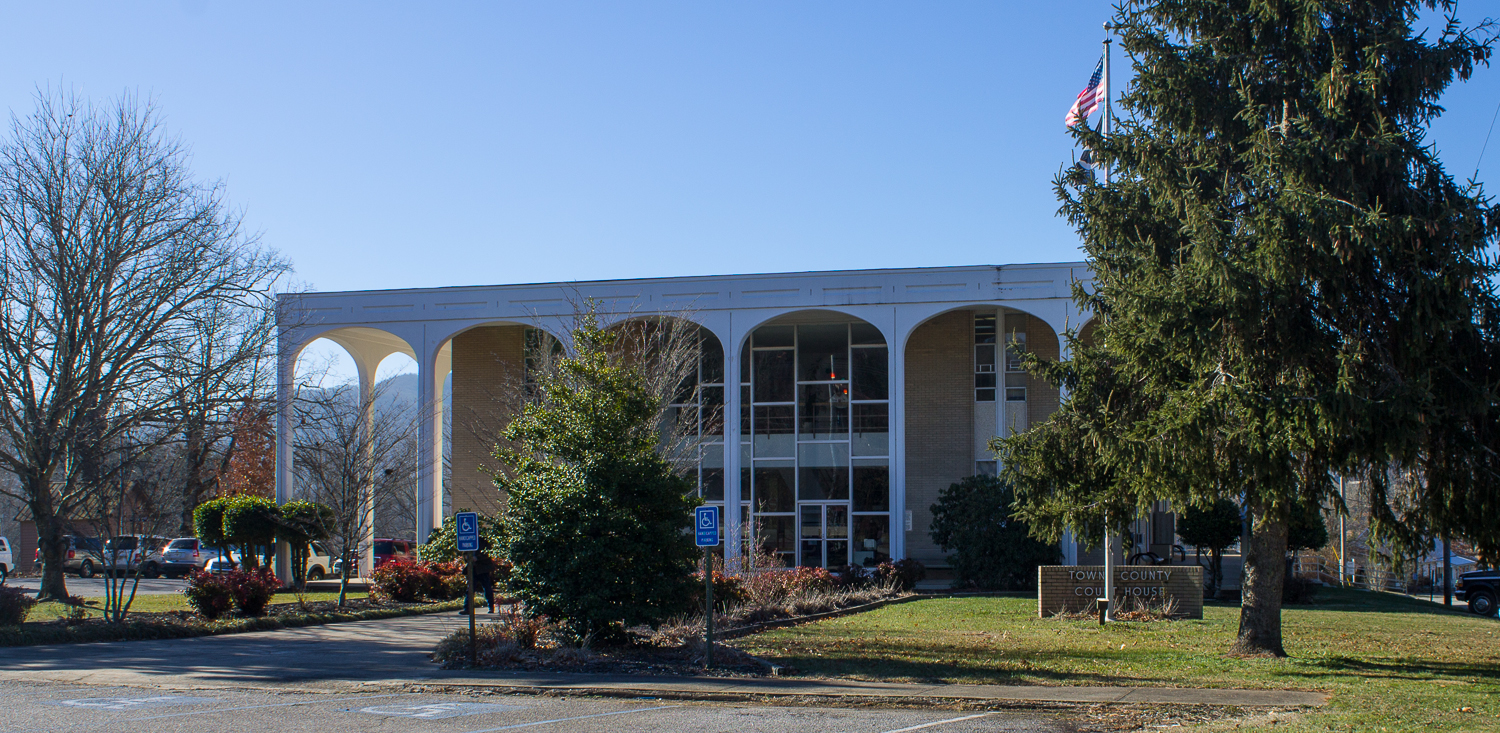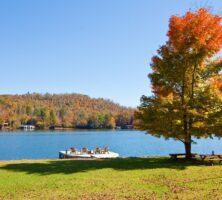Towns County, which borders North Carolina in northeast Georgia’s Blue Ridge Mountains, is the state’s 118th county and comprises 167 square miles. It was created in 1856 from Rabun and Union counties. Originally inhabited by Cherokee Indians, the newly formed county was named for George W. Towns, the governor of Georgia from 1847 to 1851.
The first white settlers, attracted by the promise of free land, arrived after the Indian cessions of 1818 and 1819. Many of them came from the state’s coastal counties, although those who gravitated to the most remote areas of the county were farmers from the mountains of North Carolina.

An important facet of early life in Towns County was a road built upon a Cherokee trading path running north to south through the county and passing through Unicoi Gap. It served as a line between settlers and the Cherokees until after the Indian cessions, when it fell solely into the hands of the whites. When the Cherokees were expelled from their villages, they were forced into “removal forts,” one of which was located in what is now Hiawassee, the county seat.
Its remote location buffered the county from many of the effects of the Civil War (1861-65) and Reconstruction. Many residents of mountainous northeast Georgia were opposed, or at least held no enthusiasm for, the Confederate cause. One group of young men from Towns County, holding anti-Confederate sentiments, fled to Tennessee to escape fighting for the Southern cause, but were ambushed and killed by Confederates.
Hiawassee was incorporated in 1956, although it was originally incorporated in 1870 as “Hiwassee.” The name is from the Cherokee for “meadow,” “savanna,” or “pretty fawn.” The first courthouse, completed in 1857, was replaced in 1905. The current courthouse was built in 1964. The county has one other incorporated town, Young Harris, a college town in the mountains. Originally called McTyeire, the town changed its name to Young Harris to honor a major benefactor of the local McTyeire Institute, founded in 1886 by Artemus Lester. When the town changed its name, the college followed suit. Each summer, Young Harris College is the host of The Reach of Song, the official state historic drama, which is performed at the Clegg Fine Arts Center. Unincorporated communities include Gumlog, Jacksonville, Osborn, and Tree.
The primary economic focus of the county’s residents for more than a century was farming, although some gold and mineral mining occurred in the county’s east. The invention and popularization of the automobile after World War I (1917-18) prompted the state to build an east-west road, which linked Towns County to hitherto inaccessible markets. This road contributed to a boost in the commercial development of the county and eventually stimulated a tourist industry as well. Tourism has now supplanted agriculture as the major economic focus in Towns County.

Travelers are particularly attracted by the area’s Appalachian music, arts and crafts, mountains, and rivers. Many are drawn to the annual Georgia Mountain Fair, which has been held in Hiawassee since 1950. The southern and eastern borders of the county are framed by the Appalachian Trail, another important attraction. More than 50 percent of Towns County is owned by the federal government; most of this is forest parkland.
Notable residents include former U.S. Office of Management and Budget director Bert Lance, Georgia governor Zell Miller, and poet Byron Herbert Reece.
Among the points of interest in Towns County are Brasstown Bald, the highest mountain in Georgia, which is also partly in Union County; the Chattahoochee National Forest; Lake Chatuge, a 7,050-acre reservoir; the Unicoi Turnpike, the first vehicular road in the county and surrounding area; and Unicoi Gap, the first pass in the Georgia Blue Ridge through which a public road was constructed. The Fred Hamilton Rhododendron Garden in Hiawassee is the largest rhododendron garden in the state.
Two important rivers flow through Towns, the Tallulah (Falls) River, which enters Georgia in its northeast corner, and the Hiwassee River, whose headwaters are on the northern side of Unicoi Gap.
According to the 2020 U.S. census, the population was 12,493.








